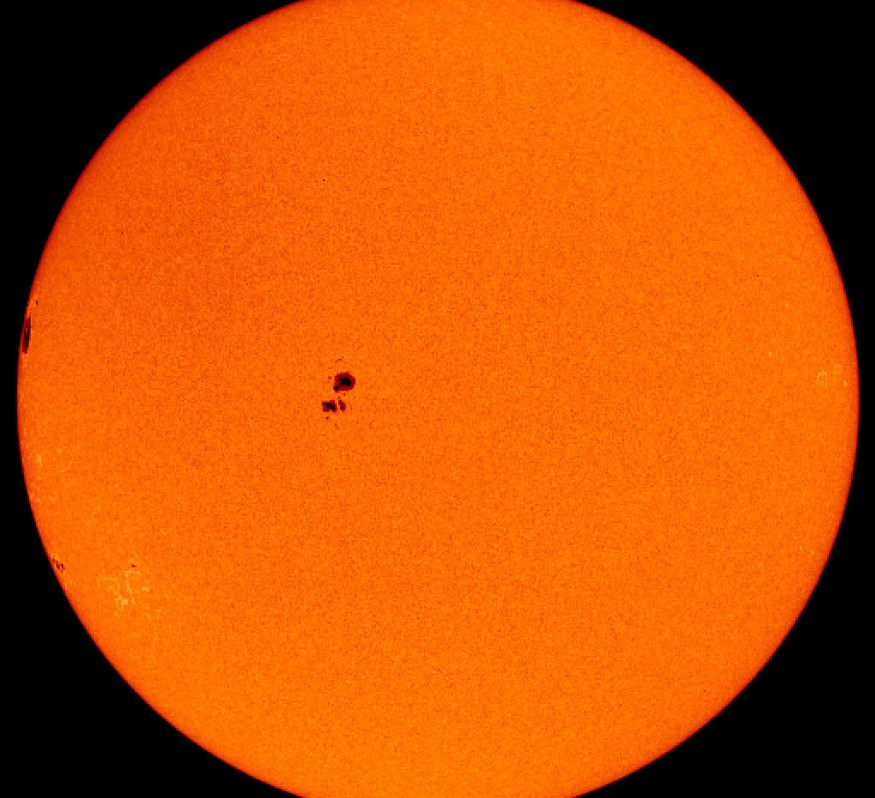
A growing sunspot had emerged from the southeastern side of the sun and slowly rotating into Earth's view.
The sunspot, known as AR3068, had tripled in size in just a day, News Week reported.
Moreover, the "enormous, new," and fast-expanding sunspot is expected to slowly spin towards Earth and intensify solar activity in the coming days, according to Transcontinental Times.
It can be seen in the image taken by NASA's Solar Dynamics Observatory that the dark regions in the sun's atmosphere began to show due to a magnetic field strong enough to block some of the sun's heat reaching its atmosphere, resulting in cooler and darker spots.
Consequently, these cold regions can suddenly erupt into a flourish of activity if the magnetic fields suddenly shift, sending solar material into space in the form of coronal mass ejection.
If this happens around Earth, they can interfere with the planet's magnetic field and disrupt power grids, radio communications and satellites - such events are known as geomagnetic storms.
In some cases, it is accompanied by a flash of light and radiation known as a solar flare.
One to Watch
As told by the solar science website Spaceweather.com on Friday, the growing sunspot AR3068 that is rotating into view could be one to watch, and that the sunspot "merits watching as a possible source of near-future activity."
However, the U.S. National Oceanic and Atmospheric Administration's Space Weather Prediction Center (SWPC) had not issued any alerts for geomagnetic storms.
The solar cycle goes through a period of approximately 11 years during which the number of sunspots differs, and the count varies.
Each cycle will have a solar maximum, which happens when the number of sunspots peaks, and solar minimum when it reaches its lowest point.
As the sun is ramping up to the peak of its current solar cycle, its solar maximum is expected sometime in the summer of 2025, SWPC data predicted.
Current Solar Cycle
Data appears to show that the current solar cycle is way more active than it should and has a greater number of sunspots than the official forecast predicted.
Scientists are constantly tracking the sun's activity and behavior to be able to predict and determine the source of space weather that can potentially cause massive disruption, in the form of solar flares and coronal mass ejections.
These eruptions interfere with electrical systems on Earth and produce auroras in the sky.
Thankfully, our scientists have the means to observe the sun with special instruments to predict disruptions and look out for sunspots.
This instrument gives them a few days' warning of an incoming cloud of particles.
The sun is currently in its 25th cycle, which means activity will keep increasing for a few more years, but as reported, the current cycle's activity appears well ahead of predictions.
"The observations of sunspot numbers are certainly tracking higher than the official forecasts," said Mathew Owens, professor of space physics at the University of Reading in the U.K., adding that getting the timing of the cycle may have start wrong.
"If you push the official forecast back 6 months-which is not an unreasonable thing to do, as the forecast was focused on magnitude, rather than timing-it agrees pretty well," he told News Week last April.
Related article : Uncontrolled Chinese Rocket Set to Crash on Earth Next Week
© 2026 NatureWorldNews.com All rights reserved. Do not reproduce without permission.





